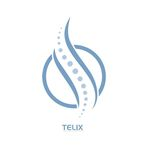Telix Pharmaceuticals: Pioneering New Frontiers in Cancer Treatment
May 13, 2025, 12:09 pm

Location: Australia, Victoria, North Melbourne
Employees: 51-200
Founded date: 2015
Total raised: $28M

Location: United States, Kansas, Winfield
Employees: 1001-5000
Founded date: 2011
Total raised: $820K
In the ever-evolving landscape of cancer treatment, Telix Pharmaceuticals is carving a niche. With its innovative approaches, the company is making strides in both diagnostic and therapeutic realms. Two recent developments showcase Telix's commitment to addressing significant unmet medical needs in oncology.
First, let’s delve into the Phase 3 study of TLX591-CDx, also known as Illuccix. This imaging agent is designed for prostate cancer detection. The study, conducted in China, has just completed patient enrollment. It’s a pivotal moment for Telix. The aim? To demonstrate that TLX591-CDx can effectively image prostate cancer in Chinese patients, mirroring its success in Western populations.
Prostate cancer is on the rise in China. In 2022, over 134,000 men were diagnosed. This number is climbing, driven by an aging population and lifestyle changes. The urgency for effective diagnostic tools is palpable. Illuccix could be a game-changer. By bridging the gap between Western and Chinese patient data, Telix is positioning itself for regulatory approval from the Chinese National Medical Products Administration (NMPA).
The collaboration with Grand Pharmaceutical Group Limited is crucial. This partnership enhances Telix's reach in the Greater China region. Together, they aim to improve access to advanced PSMA-PET imaging. The completion of this study is a significant milestone. It’s a step closer to providing Chinese men with prostate cancer the diagnostic tools they desperately need.
Now, let’s shift gears to another promising development: TLX400, a FAP-targeting therapeutic for thyroid cancer. Recently published in the journal Thyroid, TLX400 has shown encouraging results in patients with radioiodine-resistant thyroid cancer. This is a tough nut to crack. Traditional treatments often fall short, leaving patients with limited options.
The study involved 73 heavily pre-treated patients. TLX400 demonstrated a promising safety profile and efficacy. The median progression-free survival (PFS) was 29 months, while overall survival (OS) reached 32 months. These numbers are not just statistics; they represent hope for patients facing aggressive cancer types.
What sets TLX400 apart? Its novel structure allows for prolonged tumor retention while minimizing off-target effects. This is a significant advancement over first-generation FAP-targeting compounds. The implications are vast. If TLX400 can effectively target cancer-associated fibroblasts (CAFs), it could reshape the treatment landscape for various solid tumors.
The role of CAFs in cancer progression is becoming clearer. They influence the tumor microenvironment, angiogenesis, and even chemotherapy resistance. By targeting these cells, TLX400 aims to disrupt the cycle of tumor growth. This approach is not just innovative; it’s necessary. Patients with comorbidities often struggle with traditional therapies. TLX400 offers a potential lifeline.
Telix is not just resting on its laurels. The company is actively exploring the clinical utility of its FAP portfolio across multiple cancer types, including bladder cancer. This broadens the scope of their research and enhances their position in the oncology market.
Both TLX591-CDx and TLX400 highlight Telix's commitment to innovation. The company is not merely developing drugs; it’s redefining how we approach cancer treatment. With a focus on patient needs and technological advancements, Telix is paving the way for future breakthroughs.
The path ahead is not without challenges. Regulatory hurdles, market competition, and the need for continued research loom large. However, Telix's strategic partnerships and robust pipeline provide a solid foundation. The company is poised to make a significant impact in the oncology space.
In conclusion, Telix Pharmaceuticals is a beacon of hope in the fight against cancer. With its groundbreaking studies and innovative therapies, the company is not just chasing profits; it’s chasing a vision. A vision where cancer patients have access to effective diagnostics and treatments. As the landscape of oncology continues to evolve, Telix stands ready to lead the charge. The future looks bright, and for many patients, it may just be a little brighter.
First, let’s delve into the Phase 3 study of TLX591-CDx, also known as Illuccix. This imaging agent is designed for prostate cancer detection. The study, conducted in China, has just completed patient enrollment. It’s a pivotal moment for Telix. The aim? To demonstrate that TLX591-CDx can effectively image prostate cancer in Chinese patients, mirroring its success in Western populations.
Prostate cancer is on the rise in China. In 2022, over 134,000 men were diagnosed. This number is climbing, driven by an aging population and lifestyle changes. The urgency for effective diagnostic tools is palpable. Illuccix could be a game-changer. By bridging the gap between Western and Chinese patient data, Telix is positioning itself for regulatory approval from the Chinese National Medical Products Administration (NMPA).
The collaboration with Grand Pharmaceutical Group Limited is crucial. This partnership enhances Telix's reach in the Greater China region. Together, they aim to improve access to advanced PSMA-PET imaging. The completion of this study is a significant milestone. It’s a step closer to providing Chinese men with prostate cancer the diagnostic tools they desperately need.
Now, let’s shift gears to another promising development: TLX400, a FAP-targeting therapeutic for thyroid cancer. Recently published in the journal Thyroid, TLX400 has shown encouraging results in patients with radioiodine-resistant thyroid cancer. This is a tough nut to crack. Traditional treatments often fall short, leaving patients with limited options.
The study involved 73 heavily pre-treated patients. TLX400 demonstrated a promising safety profile and efficacy. The median progression-free survival (PFS) was 29 months, while overall survival (OS) reached 32 months. These numbers are not just statistics; they represent hope for patients facing aggressive cancer types.
What sets TLX400 apart? Its novel structure allows for prolonged tumor retention while minimizing off-target effects. This is a significant advancement over first-generation FAP-targeting compounds. The implications are vast. If TLX400 can effectively target cancer-associated fibroblasts (CAFs), it could reshape the treatment landscape for various solid tumors.
The role of CAFs in cancer progression is becoming clearer. They influence the tumor microenvironment, angiogenesis, and even chemotherapy resistance. By targeting these cells, TLX400 aims to disrupt the cycle of tumor growth. This approach is not just innovative; it’s necessary. Patients with comorbidities often struggle with traditional therapies. TLX400 offers a potential lifeline.
Telix is not just resting on its laurels. The company is actively exploring the clinical utility of its FAP portfolio across multiple cancer types, including bladder cancer. This broadens the scope of their research and enhances their position in the oncology market.
Both TLX591-CDx and TLX400 highlight Telix's commitment to innovation. The company is not merely developing drugs; it’s redefining how we approach cancer treatment. With a focus on patient needs and technological advancements, Telix is paving the way for future breakthroughs.
The path ahead is not without challenges. Regulatory hurdles, market competition, and the need for continued research loom large. However, Telix's strategic partnerships and robust pipeline provide a solid foundation. The company is poised to make a significant impact in the oncology space.
In conclusion, Telix Pharmaceuticals is a beacon of hope in the fight against cancer. With its groundbreaking studies and innovative therapies, the company is not just chasing profits; it’s chasing a vision. A vision where cancer patients have access to effective diagnostics and treatments. As the landscape of oncology continues to evolve, Telix stands ready to lead the charge. The future looks bright, and for many patients, it may just be a little brighter.